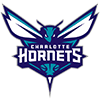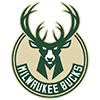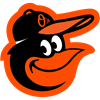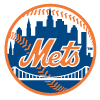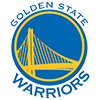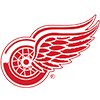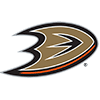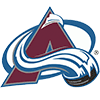2014 Draft Dilemmas
Last year's draft prep article featured a number of general draft and auction tips. Those tips still apply, and in future articles we'll revisit more general concepts, but this year we're going to address some of the most problematic issues facing this year's draft pool.
Taking Starting Pitching Early
I haven't yet mastered the NFBC Main Event format, but I've had enough experience there that I have a basic idea of what works and what doesn't. The general guideline to try to find 3-4 solid hitters at the top of the draft, followed by two ace starting pitchers has generally worked best for me. However, that rubric seems to be changing along with the changing offensive environment in Major League Baseball. In 2013, MLB teams averaged 4.17 runs per game, which is the lowest output since 1992, well down from a modern era peak of 5.14 runs per game in 2000. They are hitting fewer homers and stealing fewer bases than in recent memory, too. As there become fewer reliable elite hitters available, it follows that starting pitching, at least elite starting pitching, is less volatile than it used to be, and thus it's more advisable to draft starting pitching early.
The market has started to adjust to that reality. In last year's drafts, more starting pitching was drafted in the first five rounds than in recent memory. As one example, in my NFBC Main Event league, which is a 15-team mixed league with no trading,
2014 Draft Dilemmas
Last year's draft prep article featured a number of general draft and auction tips. Those tips still apply, and in future articles we'll revisit more general concepts, but this year we're going to address some of the most problematic issues facing this year's draft pool.
Taking Starting Pitching Early
I haven't yet mastered the NFBC Main Event format, but I've had enough experience there that I have a basic idea of what works and what doesn't. The general guideline to try to find 3-4 solid hitters at the top of the draft, followed by two ace starting pitchers has generally worked best for me. However, that rubric seems to be changing along with the changing offensive environment in Major League Baseball. In 2013, MLB teams averaged 4.17 runs per game, which is the lowest output since 1992, well down from a modern era peak of 5.14 runs per game in 2000. They are hitting fewer homers and stealing fewer bases than in recent memory, too. As there become fewer reliable elite hitters available, it follows that starting pitching, at least elite starting pitching, is less volatile than it used to be, and thus it's more advisable to draft starting pitching early.
The market has started to adjust to that reality. In last year's drafts, more starting pitching was drafted in the first five rounds than in recent memory. As one example, in my NFBC Main Event league, which is a 15-team mixed league with no trading, a whopping 19 starting pitchers went in the first five rounds. How did it work out? Here are those pitchers, separated by round and listed with their value earned according to our in-season auction values generator (which assumes a 70-30 hitter/pitcher split, so these starting pitching values will seem a little low).
Round 2 - Stephen Strasburg ($13), Justin Verlander ($11), Clayton Kershaw ($29), David Price ($9), Felix Hernandez ($16)
Round 3 - Cliff Lee ($21), Yu Darvish ($22), Matt Cain ($5), Cole Hamels ($10)
Round 4 - Gio Gonzalez ($10), Adam Wainwright ($22), Jered Weaver ($6), Zack Greinke ($13), CC Sabathia ($2)
Round 5 - Jordan Zimmermann ($15), Chris Sale ($17), Max Scherzer ($25), Madison Bumgarner ($18), James Shields ($13)
On an aside, how sweet was that fifth round? Do you think that the owner that debated between Strasburg and Kershaw and took Strasburg regrets his decision? (Yes, I do - quite a bit)
While there are some disappointments in there, there are also no B.J. Upton-level nuclear disasters. Only three pitchers (Cain, Weaver, Sabathia) were significant busts, though Strasburg, Verlander and Price were certainly disappointments for the cost even if they didn't kill you. But there were copious hitter disasters as well. In the first round alone, Ryan Braun, Albert Pujols, and Matt Kemp were disasters, and Joey Votto, Bryce Harper, Giancarlo Stanton, Prince Fielder and Jose Bautista all brought far less than what was hoped for. If you do the round-by-round analysis, either from an actual draft or from last year's ADP, you'll see similar results. Moreover, from that group of 19 pitchers, 15 remain among this year's top 19 starting pitchers according to ADP, with Shields, Gonzalez and Cain sitting from 20-22. Only Sabathia has dropped significantly out. The eventual winner of this league, KC Cha, finished fourth overall in the Main Event, and took starting pitching in the second, fourth and sixth rounds.
The takeaway here is that starting pitching seems less volatile than before, and that it's not a bad idea to grab that starting pitcher early if he's at the top of your queue. A good set of projections should already incorporate the risks that are inherent with drafting pitchers, so you need not add another layer of precaution if that pitcher is the most valuable player available. Certainly your individual draft dynamics matter - if nobody is taking starting pitching early, then it might make sense to wait an additional round to nab that pitcher, and that's what happened in one of my industry-wide mock drafts this offseason, where just two starting pitchers went in the first 40 picks. Most other results suggest that's unlikely to happen. Again, looking at early NFBC ADP data, an average of 15 starting pitchers are going in the first five rounds, led by Kershaw, who has gone as early as fourth overall.
When Do You Take the Plunge on Billy Hamilton?
Major league teams averaged .55 stolen bases per game in 2013, as compared to .66 and .67 the previous two seasons. The marginal value of each stolen base has increased considerably, which is a little strange at a time when power and runs scored are also down. One would think that teams would try to run more to compensate for the lack of power, but that hasn't been the case. Attempted stolen bases have decreased at the same rate as successful stolen bases.
Into this environment steps Hamilton, who stole 75 bases in 123 Triple-A games last year, followed by an additional 13 steals in September with the big league club, after a record-breaking 155-steal season in 2012 between High-A and Double-A. He has the starting center field and leadoff hitter job for the Reds to enter the season, with very little competition for playing time on the roster or the open market. Of those on the Reds roster, only Chris Heisey or Skip Schumaker could realistically play center field. At press time, there were no center fielders among the dwindling number of free agent hitters. The potential is there for him to account one-half to two-thirds of the stolen bases you need to win the category with a full season of playing time.
But can he keep the job? Hamilton's walk rate dropped dramatically at Triple-A Louisville last year, dropping from 16.9% the previous year at Double-A to 6.9%. Because he offered so little power (.106 ISO) and because the penalty for walking him was so high, there was little incentive for Triple-A pitchers to avoid the strike zone. What's going to happen in the big leagues, when the pitchers he faces have better stuff and better control? It's not too hard to imagine that he will become the next Dee Gordon, and if you strain your eyes, the next Esix Snead. My guess is that the Reds will be willing to put up with .300 OBP and .340 SLG, as long as it comes with great defense in center field. If that happens, 75-100 stolen bases become the likely result, which along with the runs scored he will provide, makes him worth anywhere between the 40th and 85th player overall. If he hits .270 or higher, the sky is the limit for his fantasy value - he'd be a borderline first-round pick.
The final consideration for Hamilton's draft value is league context. If you play in the NFBC or another league where no trading is allowed, it's appropriate to discount him by about a round. Having a big surplus in steals over what it takes to win the category doesn't help you - and you can't leverage that surplus into another commodity midway through the season. During the draft, it's necessary to pass up on other players that get most of their value from stolen bases, lest you fall behind in other hitting categories. And that leaves you exposed to Hamilton's volatility. If he tanks and gets demoted after six weeks, instead of earning a top-three spot in the stolen bases category, suddenly you're at risk of becoming a bottom-five team in that same spot.
After weighing the pros and cons regarding Hamilton, I have him ranked 72nd overall, roughly equating him with a late sixth-round pick in standard 12-team leagues.
Evaluating the Unknown
Trying to project players from foreign leagues is difficult. At least in Japan we have a significant amount of reliable data, park factors, and a decent sample size of players coming over the majors to give us an educated guess on how their abilities will translate. Because of that, we have a reasonable guess at what Masahiro Tanaka will do with the Yankees.
But we also have three Cuban players entering our player pool this year - Jose Abreu with the White Sox, Alex Guerrero with the Dodgers, and Miguel Alfredo Gonzalez with the Phillies. The error rate for Cuban players is higher because they play fewer games in a season, at a wider range of ballparks and with less certainty that the data provided from those games is accurate. And while Clay Davenport (formerly of Baseball Prospectus) has done yeoman's work interpreting Cuban players' stats, our knowledge about the strength of season play there is still limited. Gonzalez is especially difficult to project because he's been out of action for so long.
The good news for those looking to take the chance on Abreu or Guerrero is that your league-mates typically avoid the unknown, kicking the can down the road. If you recall when Yoenis Cespedes was signed by the A's, the consensus was that the team overpaid, and that it was a huge gamble to take him among the top 200 picks. Those that gambled netted a huge profit after he hit .292 with 23 homers and 16 steals in his rookie campaign. Perhaps because of that experience, Abreu has skyrocketed on the ADP lists this offseason, though the interest in Guerrero has remained tepid, perhaps because of his offseason injury issues.
Biogenesis Suspensions
Aside from Alex Rodriguez, who is suspended for the entire 2014 season, the class of players suspended from the Biogenesis case will return this season. The general inference is that we will downgrade Ryan Braun, Everth Cabrera and Nelson Cruz, among others, but by how much? Our big problem is that we don't have all the necessary variables to solve this equation. For instance, was Braun only using up until his positive test during the 2011 playoffs, or did he keep going in 2012 and simply do a better job concealing his PED use? How long was he using? What did he use and how much was his dosage? Was 2013 his only clean season? Given that he went to the University of Miami and so many of the players involved in the scandal had Miami ties, a possible inference is that he started all the way back in college. A different subset of PED's could keep a player on the field or at full strength more frequently too. What if a player runs less with the lack of chemical help? The biggest disappointment to me from this entire subject is the lost opportunity to get full information out in the open. It's a shame that we don't know the exact amounts used by each player and the subsequent effects from these enhancers. As a result, I'm far less inclined to draft the likes of Braun or Cabrera than I am an unknown like Abreu or Guerrero, especially at their respective costs.








